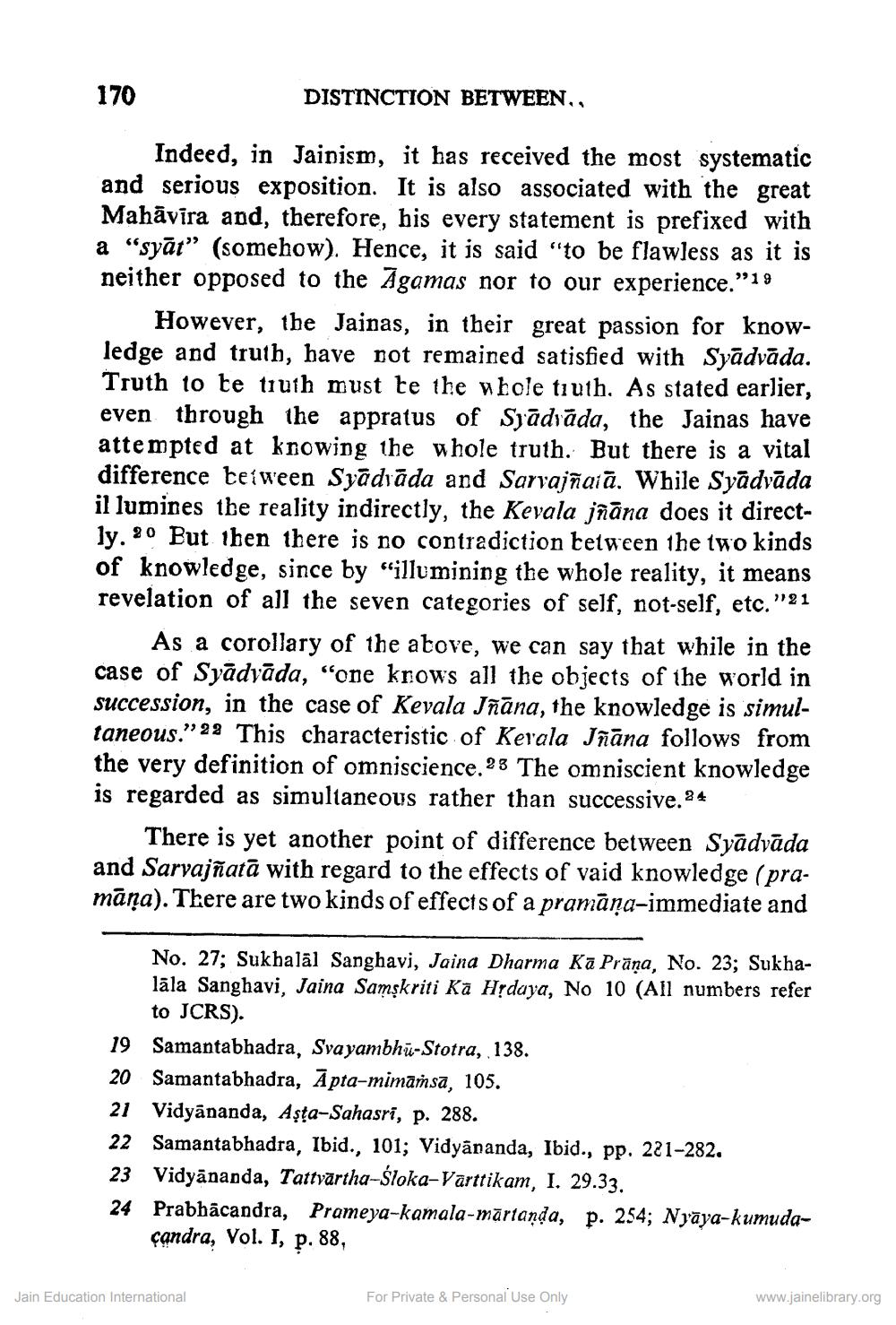________________
170
DISTINCTION BETWEEN ,
Indeed, in Jainism, it has received the most systematic and serious exposition. It is also associated with the great Mahāvīra and, therefore, his every statement is prefixed with a “syāt" (somehow). Hence, it is said "to be flawless as it is neither opposed to the Agamas nor to our experience."19
However, the Jainas, in their great passion for knowledge and truth, have not remained satisfied with Syādvāda. Truth to be truth must te the whole tiuth. As stated earlier, even through the appratus of Sjādrāda, the Jainas have attempted at knowing the whole truth. But there is a vital difference between Syādıāda and Sarvajñaiā. While Syādvāda il lumines the reality indirectly, the Kevala jñana does it directly. 20 But ihen there is no contradiction between the two kinds of knowledge, since by “illumining the whole reality, it means revelation of all the seven categories of self, not-self, etc.”21
As a corollary of the above, we can say that while in the case of Syādyāda, “one knows all the objects of the world in succession, in the case of Kevala Jñāna, the knowledge is simultaneous."22 This characteristic of Kerala Jñāna follows from the very definition of omniscience.28 The omniscient knowledge is regarded as simultaneous rather than successive. 24
There is yet another point of difference between Syādvāda and Sarvajñatā with regard to the effects of vaid knowledge (pramāņa). There are two kinds of effects of a pramāņa-immediate and
No. 27; Sukhalal Sanghavi, Jaina Dharma Ka Prāna, No. 23; Sukhalāla Sanghavi, Jaina Samskriti Ka HỊdaya, No 10 (all numbers refer to JCRS).
Samantabhadra, Svayambhu-Stotra, 138. 20 Samantabhadra, Apta-mimansa, 105. 21 Vidyānanda, Aşta-Sahasri, p. 288. 22 Samantabhadra, Ibid., 101; Vidyānanda, Ibid., pp. 221–282. 23 Vidyānanda, Tattvārtha-śloka-Varttikam, I. 29.33. 24 Prabhācandra, Prameya-kamala-märtanda, p. 254; Nyāya-kumuda
candra, Vol. I, p. 88,
Jain Education International
For Private & Personal Use Only
www.jainelibrary.org




